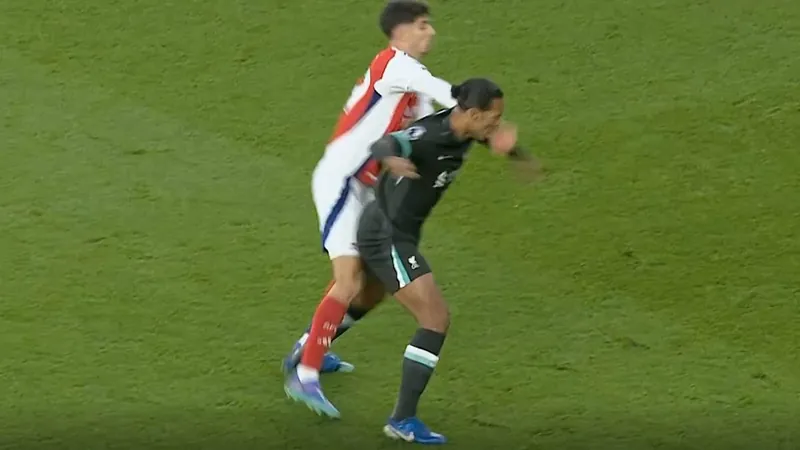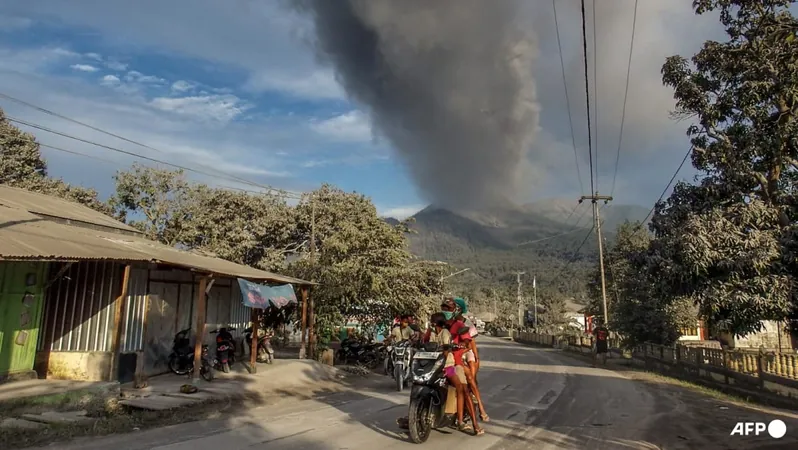
NanoAvionics MP42 Satellite Defies Odds After Dramatic Collision in Space!
2024-10-31
Author: Ming
Introduction
In a remarkable turn of events, the NanoAvionics MP42 satellite has successfully endured an impact with an unidentified object while operating in low Earth orbit (LEO). Launched two and a half years ago as part of the SpaceX Transporter-4 mission, the MP42 recently sustained damage from what appears to be either a piece of space debris or a micrometeoroid. Initial assessments revealed a 6 mm hole—about the size of a chickpea—in one of its solar panels. Despite this unexpected incident, the satellite has continued its mission uninterrupted, showcasing exceptional resilience. The damage came to light through an image captured by the satellite’s onboard selfie camera in October 2024, with the last selfie recorded a year and a half prior, in April 2023.
The Problem of Space Debris
This incident sheds light on the pressing issue of space debris and emphasizes the need for responsible space operations. Currently, the orbits around Earth are congested with nearly 3 million kilograms of human-made debris, comprising inactive satellites and used rocket stages, among other remnants. In contrast, only about 200 kilograms of natural micrometeoroid mass circulates in the same vicinity, suggesting that man-made objects pose a greater threat to operational satellites.
NASA's Findings
Interestingly, data from NASA's Long Duration Exposure Facility (LDEF) indicates that small particles in space collide with spacecraft more frequently than previously anticipated. During its mission from 1984 to 1990, the LDEF recorded an alarming average of 140 significant impact craters per square meter per year, stemming from particles typically between 0.1 mm and 3 mm in size.
Collision Statistics
Fortunately, while the threat of space debris is continuously increasing—particularly with more satellites being launched every year—collision incidents remain relatively low. The International Space Station (ISS), for example, has performed only 32 collision avoidance maneuvers over 23 years, highlighting the effectiveness of current monitoring systems.
Addressing Space Debris Mitigation
In light of this event, the conversation surrounding debris mitigation becomes more vital. NanoAvionics, as a participant in the Zero Debris Charter initiated by the European Space Agency (ESA), declares its commitment to reducing space debris by 2030. The Charter aims to set measurable debris reduction goals among more than 100 participating organizations, underscoring a collective responsibility for sustainable space practices.
Advanced Technologies and Practices
To effectively confront the challenge of space debris, NanoAvionics employs advanced space situational awareness platforms. Utilizing artificial intelligence (AI) and machine learning, these systems analyze real-time space traffic data, leading to precise predictions about potential collisions and optimized maneuvering strategies to prevent incidents. Beyond collision avoidance, the company employs several innovative practices to maintain a cleaner orbital environment.
Innovative Practices in Space Operations
- Comprehensive testing for radiation resistance, ensuring satellites remain operational to minimize risks of malfunctioning that could lead to debris. - Use of environmentally friendly release mechanisms to deploy satellite components without creating additional debris. - Incorporation of propulsion systems in long-lived missions for controlled deorbiting, which actively contributes to reducing space junk.
Satellite Design Improvements
Recent discussions have also surfaced regarding improved satellite designs to bolster resilience against the threat of debris. Positioning sensitive components strategically within the satellite architecture can minimize susceptibility to impacts. Historical data from the LDEF experiment revealed that satellites face about ten times more debris on surfaces aligned with their velocity vector, implying that design adjustments could significantly enhance durability.
Conclusion
Ultimately, the endurance of the MP42 not only showcases the satellite's strength against unforeseen challenges but also highlights the importance of innovation and collaboration in ensuring the safety and sustainability of orbital operations. As the industry looks towards the skies, the focus will undoubtedly remain on protecting both current and future missions from the burgeoning threat of space debris.




 Brasil (PT)
Brasil (PT)
 Canada (EN)
Canada (EN)
 Chile (ES)
Chile (ES)
 España (ES)
España (ES)
 France (FR)
France (FR)
 Hong Kong (EN)
Hong Kong (EN)
 Italia (IT)
Italia (IT)
 日本 (JA)
日本 (JA)
 Magyarország (HU)
Magyarország (HU)
 Norge (NO)
Norge (NO)
 Polska (PL)
Polska (PL)
 Schweiz (DE)
Schweiz (DE)
 Singapore (EN)
Singapore (EN)
 Sverige (SV)
Sverige (SV)
 Suomi (FI)
Suomi (FI)
 Türkiye (TR)
Türkiye (TR)